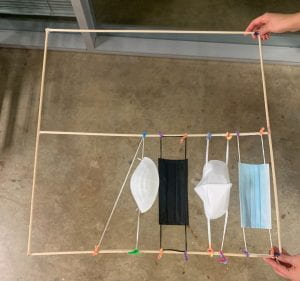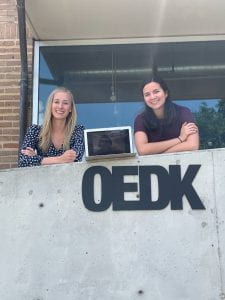I think that one thing that can be challenging for me in the design process is keeping myself from getting overly attached to certain ideas – it’s easy for me to get excited about one solution that I think will work best. While my enthusiasm for promising designs can be a good thing, it also makes it harder to consider other options and perspectives. However, during this internship, I’m learning that keeping myself open to making (potentially large) changes throughout the designing and prototyping process is extremely important. This is especially true given our particular project, which is designed to be used in a setting very different from my own, and which is very dependent on user feedback. Although something may seem like it would work very well based on my own background and context, it may not be nearly as effective or efficient in other settings. In addition, by becoming too attached to one design , I am potentially missing the opportunity to create an even better final product, either by adapting that new idea or by combining it with my own.
I initially came to this realization as my team was moving through our prototyping stage. After we had prototyped our two initial ideas, our team was very excited about the feasibility of our designs. We then, based on feedback from our international clients, began to work on performing exposure calculations in order to ensure that the various configurations of masks and UV bulbs which we were considering would actually supply the necessary dosages (approx. 1 J/cm2) to all of the masks on each mask-holding frame. In addition, we wanted to make sure that there were no huge disparities between the dosage received at different parts of each frame, as this could lead to some masks being insufficiently disinfected and others being overdosed (which can lead to degradation).
In order to do these exposure calculations, we created a spreadsheet, using the different grid-rectangles to represent points on a mask-hanging frame. Then, we used a formula into which we input bulb power, bulb length, bulb distance from the frame, and exposure time, and then received a dosage value for each point on the frame. This spreadsheet was color-coded to represent the dosage received.

We performed these calculations initially on our simple square mask-holding frame for the box prototype. By varying the height of the bulb in regards to the frame and adjusting the exposure time, we were able to achieve very promising results. We were particularly excited about the fact that we estimated we would be able to disinfect 1.2 masks per minute (our initial goal was 0 .2). However, we thought that they could still be better, leading to the development of “Gertrude,” our third prototype. Gertrude, while larger than our original square mask frame, can fit two rows of about 6 masks. In addition, two bulbs would be suspended above and below this frame (one above/below each mask row). With this configuration, we were able to achieve even more uniform and reliable dosage in a shorter time – our masks per minute rate was 2.88!
.2). However, we thought that they could still be better, leading to the development of “Gertrude,” our third prototype. Gertrude, while larger than our original square mask frame, can fit two rows of about 6 masks. In addition, two bulbs would be suspended above and below this frame (one above/below each mask row). With this configuration, we were able to achieve even more uniform and reliable dosage in a shorter time – our masks per minute rate was 2.88!
Now, here is where my earlier self-reflection becomes applicable. After performing these calculations, I was very excited about the concept of moving forward with the square box idea, particularly with the new, double-row frame; it seemed to work mathematically, and appeared very easy to use. However, on Thursday, we had a prototyping workshop in which we were given the extremely strong advice by an expert to move forward with our cylindrical oil-drum concept (with a different internal frame) and disregard the box design due to the much higher accessibility and standardization potential of oil drums. This was very hard for me to accept initially, as we were essentially being told to take a number of steps back and return to brainstorming potential solutions which would be applicable with the oil drum. After discussing this feedback with one of our clients, we found that she also agreed, solidifying our future path. Over the next several days, we worked to come up with several new, promising solutions, and I quickly began to move past my frustration and back into a state of excitement. Although making such a big pivot was challenging, I have now realized it will also allow us to make an even better solution. Though at first it felt like much of what we’d done up until our redesign had been a waste of time, through reflection I have realized that all of our previous work led us to this point, and will help us to make even more informed decisions in the future.
Moving forward, our team will continue to prototype our new oil-drum frame ideas, as well as perform exposure calculations on them to determine their feasibility and effectiveness. By the end of this week, we hope to have a set design which we can move forward into higher-fidelity prototyping.
Outside of project work, we also did some fun intern activities this week! We had a group scavenger hunt around campus (my team tied for first place!) which was a great way to bond both with some of my teammates and with other interns. In addition, after our mid-summer presentations on Friday, we took some cute team photos!
